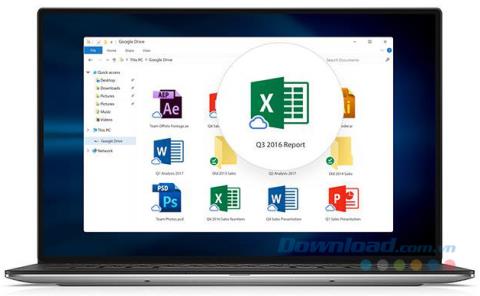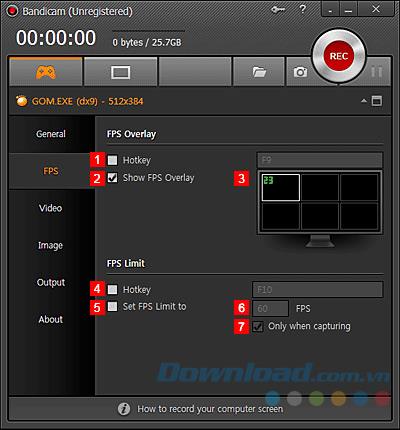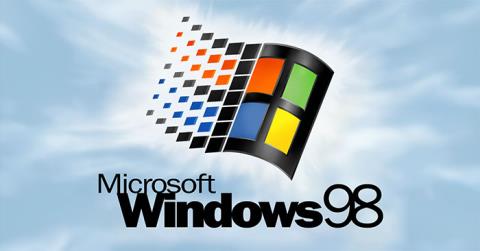All modern internet users are aware of the term Wi-Fi. It is a way to connect to the internet wirelessly. Wi-Fi is a trademark that is owned by the Wi-Fi Alliance. This organization is responsible for certifying Wi-Fi products if they meet the 802.11 wireless standards set by the IEEE. What are these standards? They are basically a set of specifications that keep growing as new frequencies become available. With every new standard, the aim is to boost the wireless throughput and range.
You may come across these standards if you are looking to buy new wireless networking gear. There are a bunch of different standards each with their own set of capabilities. Just because a new standard has been released does not mean that it is immediately available to the consumer or you need to switch over to it. The standard to choose depends on your requirements.
Consumers usually find the standard names hard to understand. That is because of the naming scheme adopted by the IEEE. Recently (in 2018), the Wi-Fi Alliance aimed to make the standard names user-friendly. Thus, they have now come up with easy-to-understand standard names/version numbers. The simpler names are, however, only for the recent standards. And, IEEE still refers to the standards using the old scheme. Thus, it is a good idea to be familiar with the IEEE naming scheme too.
Contents
Wi-Fi Standards Explained: 802.11ac, 802.11b/g/n, 802.11a
Some of the recent Wi-Fi standards are 802.11n, 802.11ac, and 802.11ax. These names can easily confuse the user. Thus, the names given to these standards by the Wi-Fi Alliance are – Wi-Fi 4, Wi-Fi 5, and W-Fi 6. You may notice that all the standards have ‘802.11’ in them.
What is 802.11?
802.11 can be considered as the basic foundation upon which all other wireless products were developed. 802.11 was the first WLAN standard. It was created by IEEE in 1997. It had a 66-feet indoor range and a 330-feet outdoor range. 802.11 wireless products are no longer made because of its low bandwidth (hardly 2 Mbps). However, many other standards have been built around 802.11.
Let us now take a look at how the Wi-Fi standards have evolved since the first WLAN was created. Discussed below are the various Wi-Fi standards that came up since 802.11, in chronological order.
1. 802.11b
Although 802.11 was the first WLAN standard ever, it was 802.11b which made Wi-Fi popular. 2 years after 802.11, in September 1999, 802.11b was released. While it still used the same radio signaling frequency of 802.11 (about 2.4 GHz), the speed went up from 2 Mbps to 11 Mbps. This was still the theoretical speed. In practice, the expected bandwidth was 5.9 Mbps (for TCP) and 7.1 Mbps (for UDP). It is not only the oldest but also has the least speed among all the standards. 802.11b had a range of about 150 feet.
As it operates at an unregulated frequency, other home appliances at 2.4 GHz range (such as ovens and cordless phones) can cause interference. This problem was avoided by installing the gear at a distance from appliances that could potentially incur interference. 802.11b and its next standard 802.11a were both approved at the same time, but it was 802.11b that hit the markets first.
2. 802.11a
802.11a was created at the same time as 802.11b. The two technologies were incompatible because of the difference in frequencies. 802.11a operated at a 5GHz frequency which is less crowded. Thus, the chances of interference were minimized. However, due to high frequency, 802.11a devices had a lesser range and the signals would not penetrate obstructions easily.
802.11a used a technique called Orthogonal Frequency Division Multiplexing (OFDM) to create a wireless signal. 802.11a also promised a much higher bandwidth – a theoretical maximum of 54 Mbps. As 802.11a devices were more expensive at the time, their use was restricted to business applications. 802.11b was the standard prevalent among the common people. Thus, it has more popularity than 802.11a.
3. 802.11g
802.11g was approved in June 2003. The standard made an attempt to combine the benefits provided by the last two standards – 802.11a & 802.11b. Thus, 802.11g provided the bandwidth of 802.11a (54 Mbps). But it provided a greater range by operating at the same frequency as 802.11b (2.4 GHz). While the last two standards were incompatible with each other, 802.11g is backward compatible with 802.11b. This means that 802.11b wireless network adapters can be used with 802.11g access points.
This is the least expensive standard that is still in use. While it provides supports for almost all the wireless devices in use today, it does have a disadvantage. If there are any 802.11b devices connected, the whole network slows down to match its speed. Thus, apart from being the oldest standard in use, it is the slowest as well.
This standard was a significant leap towards better speed and coverage. This was the time when consumers stated enjoying routers with better coverage than the previous standards.
4. 802.11n
Also named Wi-Fi 4 by the Wi-Fi Alliance, this standard was approved in October 2009. It was the first standard that made use of MIMO technology. MIMO stands for Multiple Input Multiple Output. In this arrangement, many transmitters and receivers operate either at one end or even at both ends of the link. This is a major development because you no more have to depend on higher bandwidth or transmit power for an increase in data.
With 802.11n, Wi-Fi became even faster and more reliable. You might have heard the term dual-band from LAN vendors. This means that data is delivered across 2 frequencies. 802.11n operates at 2 frequencies – 2.45 GHz and 5 GHz. 802.11n has a theoretical bandwidth of 300 Mbps. It is believed that the speeds can reach even 450 Mbps if 3 antennae are used. Due to signals of high intensity, 802.11n devices provide a greater range when compared to those of previous standards. 802.11 provides support for a wide range of wireless network devices. However, it is more expensive than 802.11g. Also, when used in close range with 802.11b/g networks, there may be interference due to the use of multiple signals.
Also Read: What is Wi-Fi 6 (802.11 ax)?
5. 802.11ac
Released in 2014, this is the most common standard in use today. 802.11ac was given the name Wi-Fi 5 by the Wi-Fi Alliance. The home wireless routers today are Wi-Fi 5 compliant and operate at 5GHz frequency. It makes use of MIMO, which means there are multiple antennas on sending and receiving devices. There is reduced error and high speed. The specialty here is, a multi-user MIMO is used. This makes it even more efficient. In MIMO, many streams are directed to a single client. In MU-MIMO, spatial streams can be directed to many clients at the same time. This may not increase the speed of a single client. But the overall data throughput of the network is significantly increased.
The standard supports multiple connections on both the frequency bands at which it operates – 2.5 GHz and 5 GHz. 802.11g supports four streams while this standard supports up to 8 different streams when it operates in the 5 GHz frequency band.
802.11ac implements a technology called beamforming. Here, the antennae transmit radio signals such that they are directed at a specific device. This standard supports data rates up to 3.4 Gbps. This is the first time the data speed has risen to gigabytes. The bandwidth offered is around 1300 Mbps in the 5 GHz band and 450 Mbps in the 2.4 GHz band.
The standard provides the best signal range and speed. Its performance is on par with standard wired connections. However, the improvement in performance can be seen only in high-bandwidth applications. Also, it is the most expensive standard to implement.
Other Wi-Fi standards
1. 802.11ad
The standard was rolled out in December 2012. It is an extremely fast standard. It operates at an unbelievable speed of 6.7 Gbps. It operates at the 60 GHz frequency band. The only disadvantage is its short range. The said speed can be achieved only when the device is situated within an 11 feet radius from the access point.
2. 802.11ah
802.11ah is also known as Wi-Fi HaLow. It was approved in September 2016 and released in May 2017. The aim is to provide a wireless standard that exhibits low energy consumption. It is meant for Wi-Fi networks that go beyond the reach of the usual 2.4 GHz and 5 GHz bands (especially those networks that operate below the 1 GH band). In this standard, data speeds can go up to 347 Mbps. The standard is meant for low-energy devices such as IoT devices. With 802.11ah, communication across long ranges without consuming much energy is possible. It is believed that the standard will compete with Bluetooth technology.
3. 802.11aj
It is a slightly modified version of the 802.11ad standard. It is meant for use in regions that operate in the 59-64 GHz band (primarily China). Thus, the standard also has another name – the China Millimeter Wave. It operates in the China 45 GHz band but is backward compatible with 802.11ad.
4. 802.11ak
802.11ak aims to provide help with internal connections within 802.1q networks, to devices that have 802.11 capability. In November 2018, the standard had a draft status. It is meant for home entertainment and other products with 802.11 capability and 802.3 ethernet function.
5. 802.11ay
The 802.11ad standard has a throughput of 7 Gbps. 802.11ay, also known as the next-generation 60GHz, aims to achieve a throughput of up to 20 Gbps in the 60GHz frequency band. Additional objectives are – increased range and reliability.
6. 802.11ax
Popularly known as Wi-Fi 6, this will be the successor of Wi-Fi 5. It has many benefits over Wi-Fi 5, such as better stability in crowded areas, high speed even when multiple devices are connected, better beamforming, etc… It is a high-efficiency WLAN. It is expected to provide excellent performance in dense regions such as airports. The estimated speed is at least 4 times more than the current speed in Wi-Fi 5. It operates in the same spectrum – 2.4 GHz and 5 GHz. Since it also promises better security and consumes lesser power, all future wireless devices will be manufactured such that they are Wi-Fi 6 compliant.
Recommended: What is the Difference Between a Router and a Modem?
Summary
- Wi-Fi standards are a set of specifications for wireless connectivity.
- These standards are introduced by the IEEE and certified and approved by the Wi-Fi Alliance.
- Many users are not aware of these standards due to the confusing naming scheme adopted by the IEEE.
- To make it simpler for the users, the Wi-Fi Alliance has re-christened some commonly used Wi-Fi standards with user-friendly names.
- With every new standard, there are additional features, better speed, longer range, etc.
- The most commonly used Wi-Fi standard today is Wi-Fi 5.




















